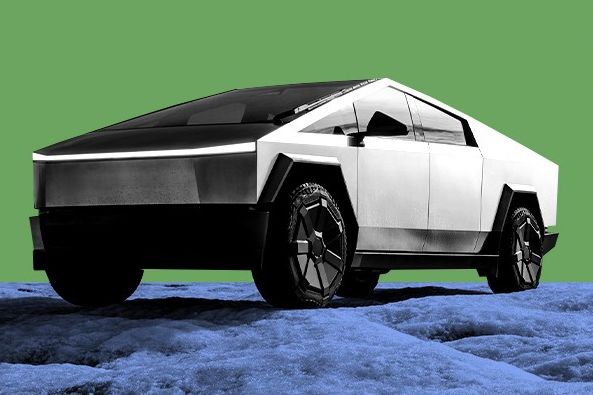The electric vehicle market is anyone’s game.
That’s the takeaway from this year’s first tranche of EV sales data, which saw the two global market leaders — Tesla and BYD — turn in dismal sales for the first three months of the year. Those were in contrast to other automakers including Rivian, Hyundai, and Toyota, all of which reported healthier numbers.
Tesla’s deliveries, which Wall Street uses as a decent proxy for sales, came up well short of analysts’ expectations at 386,810 vehicles for the quarter — down about 9% from the first quarter of 2023. Analysts have consistently cut their estimates for this quarter’s deliveries over the past few weeks, but even so, the real numbers came in well below even the lowest expectations.
“I was a little bit bearish on Tesla for this quarter — and I should’ve been darker,” Corey Cantor, an EV analyst for BloombergNEF, a new-energy research firm, told me.
But despite those meager results, Tesla edged out BYD on sales for the quarter. The Chinese EV giant — whose new $9,000 Seagull hatchback has stunned Western automakers and triggered protectionist impulses around the world — reported far less stunning sales data. BYD sold 300,114 vehicles in the first three months of 2024, down 42% compared to a year before.
That means Tesla is once again the world’s No. 1 seller of electric vehicles, after ceding that title to BYD last year. But little else is going right for Elon Musk’s car company.
Tesla has an aging vehicle line-up, and its newest North American offering, the Cybertruck, has not impressed reviewers. By its own admission, the company is struggling to scale up the Cybertruck’s production as well.
Perhaps most worrying for Musk is that Tesla produced almost 47,000 more vehicles during the first quarter than it sold, suggesting that it is beginning to hit real limits on customer demand for its cars.
“There must be some kind of supply-demand imbalance here,” Cantor said. Tesla has slashed its vehicle prices by thousands of dollars over the past year in order to stimulate demand. Tesla doesn’t break out its sales data by region, which is a shame because that could help clarify what is going on. If Tesla’s sales are flagging in China and Europe, that could be because consumers are flocking to a new set of EV options. A sales decline in the U.S. would indicate that one of the company’s cash cows, the Model Y crossover, is beginning to falter.
“If you look at this, you can see where there are yellow flags here,” Cantor said. “Tesla can explain it however you want but the numbers speak for themselves. Anytime you’re down 9% year on year is a challenge.”
It’s harder to know how to read BYD’s fillip. Other Chinese automakers reported surging March sales. Xiaomi, a Chinese phone maker, has reported almost 90,000 preorders for its first-ever electric car, the SU7. Cantor speculated that the hiccup may be due to Lunar New Year, which tends to depress sales in January and February.
Elsewhere in the car market, other EV makers did better — although few reported surging sales. One exception was Hyundai, which reported EV sales up more than 60% from the first quarter of 2023.
General Motors’ electric vehicle sales fell 20.5% compared to the first quarter of 2023, even as the company’s overall sales of personal-use vehicles rose slightly. It reported higher sales for the Lyriq, its EV SUV, Cantor said.
Toyota says that it sold 206,850 “electrified” cars across North America in the first quarter, a gain of 74% over the year before. “Electrified,” however, is a Toyota term of art — it includes conventional hybrids, plug-in hybrids, and hydrogen fuel cell vehicles. About a third of Toyota’s North American sales now fall in this category.
The electric truck maker Rivian modestly surpassed expectations, beating both analysts’ and its own estimates with 13,588 deliveries in the first few months of 2024. While its total production of 13,980 vehicles for the quarter came in marginally below predictions, Rivian reaffirmed its earlier estimates for full-year production.
Even so, by late afternoon, Rivian’s stock was down 5% for the day. That might be partially explained by the planned weeks-long shutdown of its factory in Normal, Illinois, scheduled to begin at the end of this week. While the pause will allow for renovations designed to reduce costs and increase efficiency, it will also mean that next quarter is guaranteed to be a “wash” for Rivian, Cantor said.
As of last quarter, Rivian was losing about $43,000 on every vehicle it produced. Whether it can stem those losses and get on the “bridge to profitability” executives say is within sight remains, apparently, an open question for shareholders. Rivian is now focused on surviving long enough to sell the R2 SUV. “Every single thing we do within the business is focused on driving costs on this,” RJ Scaringe, Rivian’s CEO, told CNBC last month.
Tesla's and BYD’s flagging sales may also be signaling to investors that a general EV slowdown is coming. And then, of course, there's the general malaise that descended over the EV industry in 2023 as the big legacy American automakers reported sluggish sales for their splashy new electric models and planned to scale back production in the coming year. Though the data don’t present as clear a picture as the doomers might suggest, it is undeniable that, as Princeton energy systems professor and Shift Key podcast co-host Jesse Jenkins wrote for Heatmap, “the vibes are bad.”
“The narrative now will be harsh on Tesla and BYD,” Cantor said. “But if you’re another automaker, you should see this as an opportunity. We’re in the early stages here. None of this is written.”













 IEA
IEA